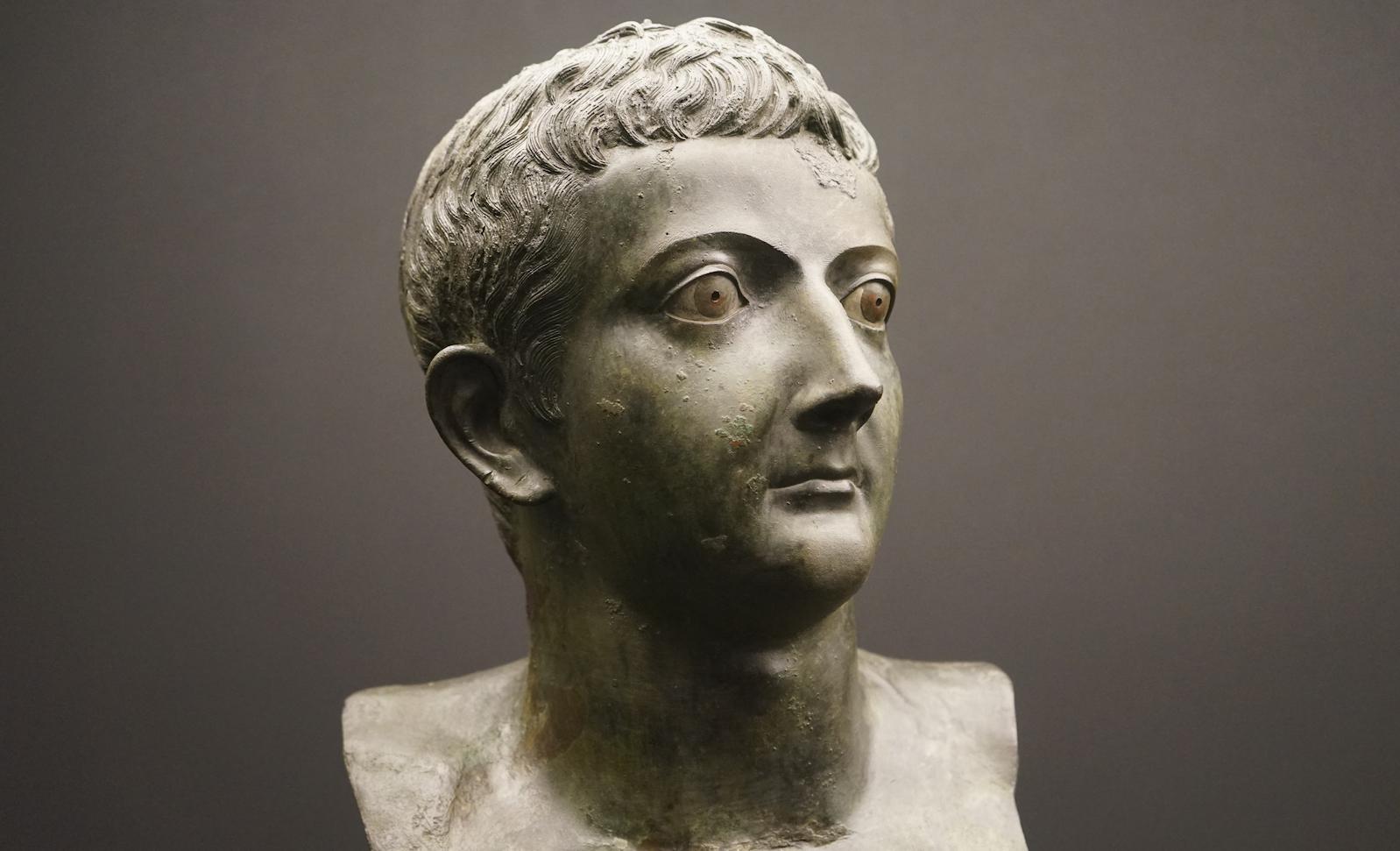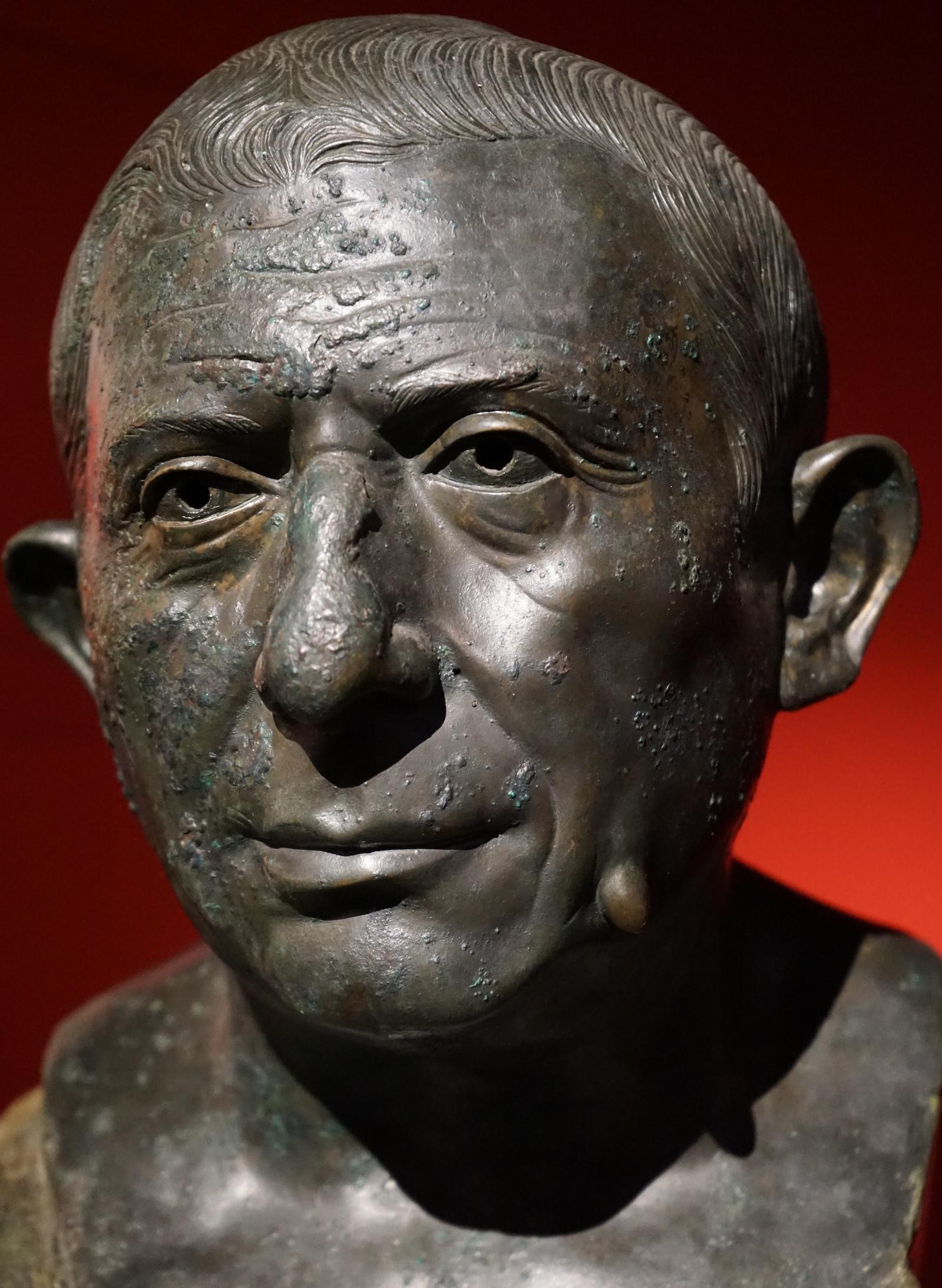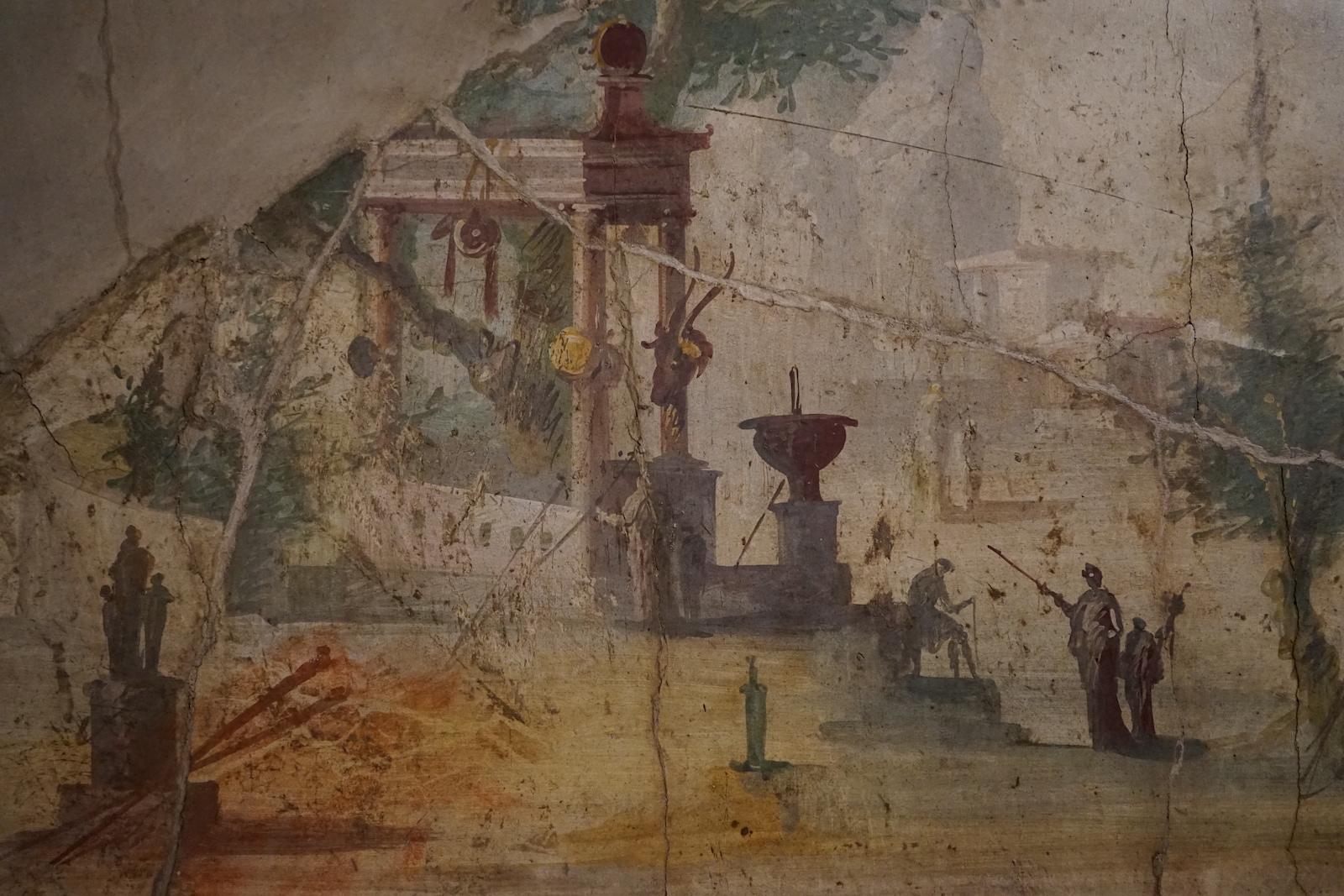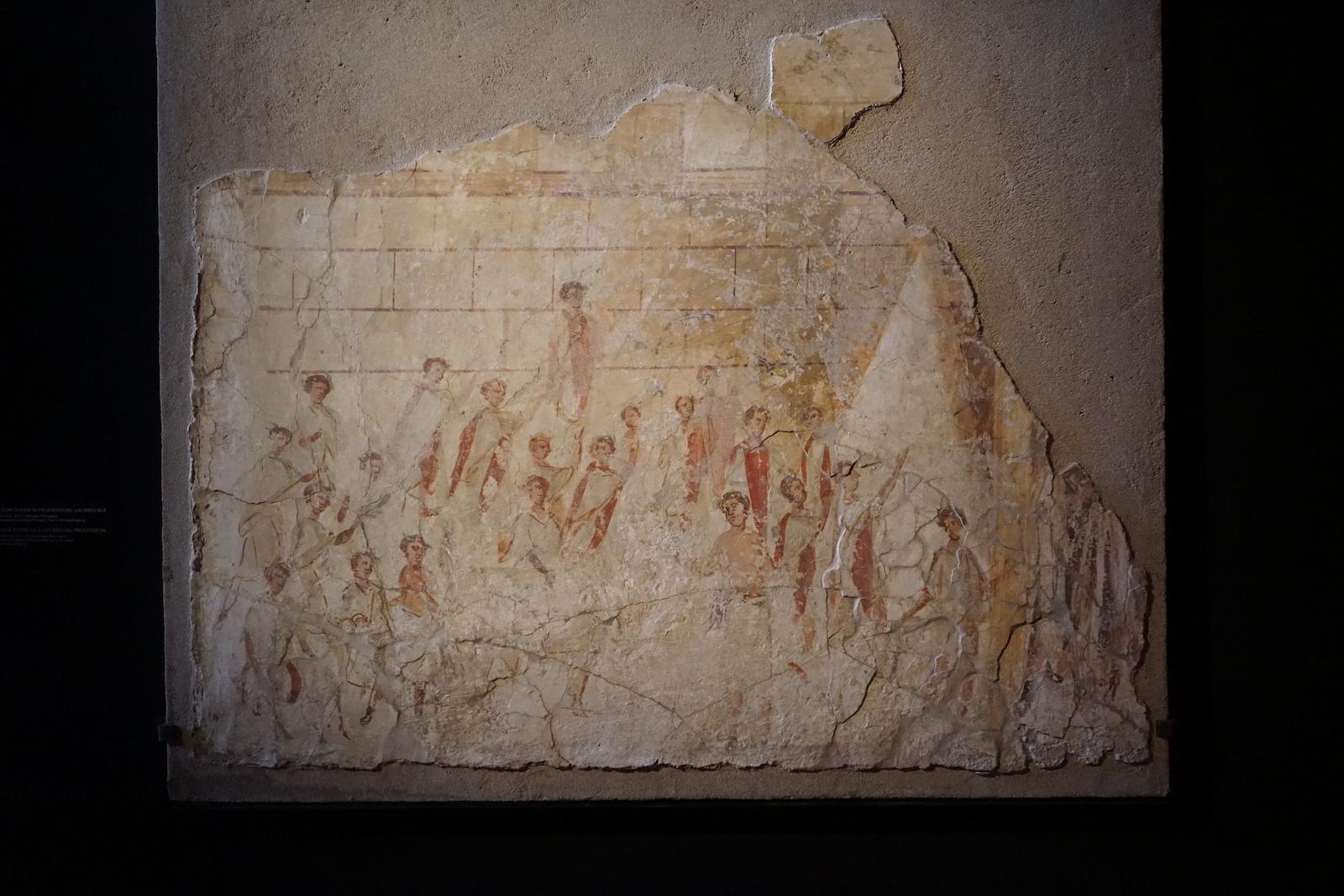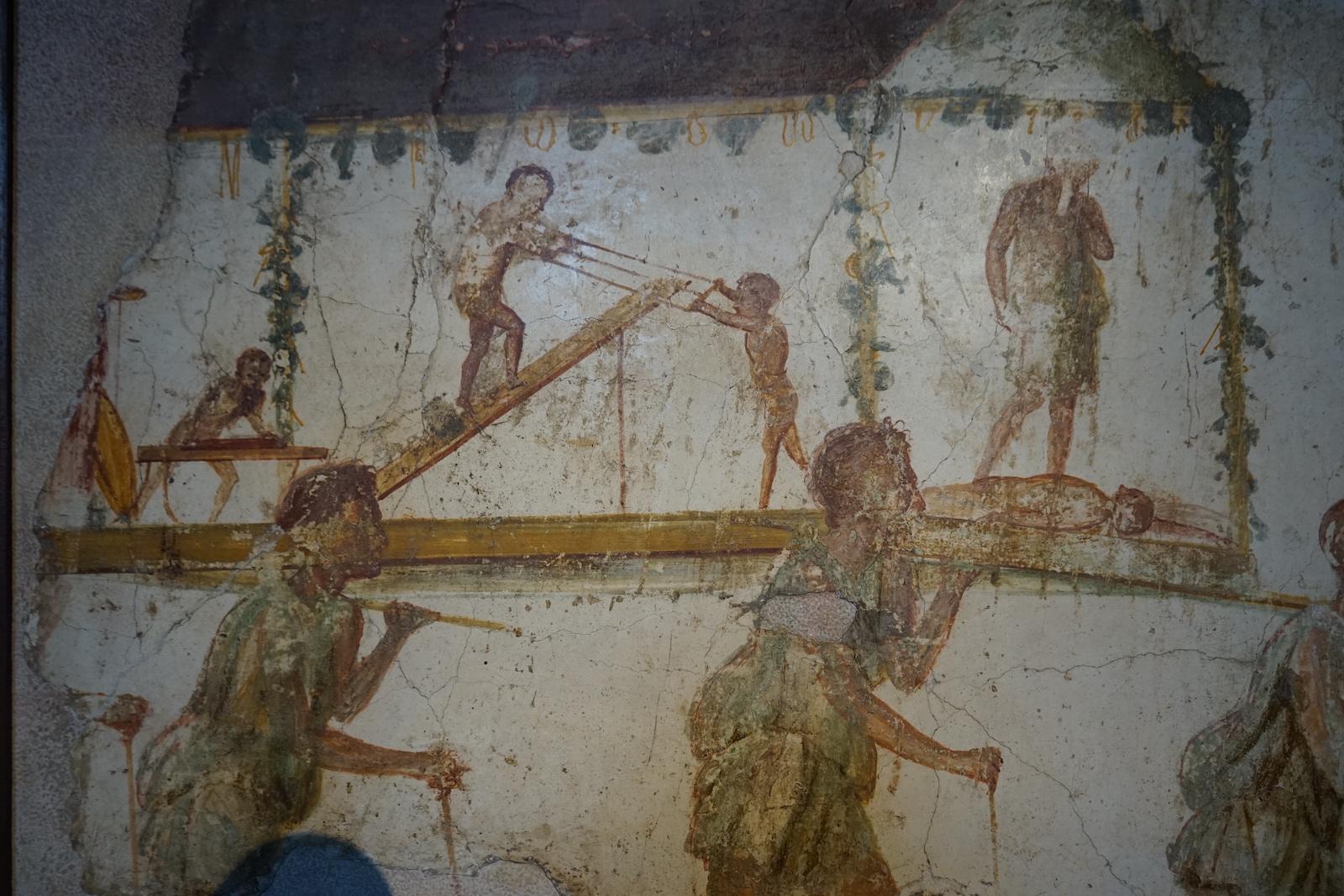The exhibition poses the question of how to compare the two most famous archaeological sites in Italy, Rome and Pompeii. In some ways, the differences are glaring: Rome was a vast metropolis with a population of approximately a million people, while Pompeii was a provincial town with an estimated twelve to fifteen thousand inhabitants. Yet, by examining cultural and artistic trends, the exhibition highlights a remarkable number of connections and similarities between the sites.
The exhibition’s narrative follows a series of key events, some of which work better with the overall theme than others. An emphasis on the Italian Social War of 91-87 BC makes complete sense, as it was after this that Pompeii became a colony of Rome, thereby dramatically transforming its relationship to the capital. It also underscores the fact that before this date Pompeii was a Samnite not a Roman settlement, with distinct institutions and language (Oscan not Latin). However, it is less obvious why the earthquake at Pompeii in AD 62 is given similar attention. This event was certainly important to Pompeii and the surrounding area, as it led to a massive program of rebuilding but its relevance to the city of Rome could be explained further.
Throughout the exhibition, other topics are similarly lacking. To illustrate Pompeii’s trade network, the exhibition reconstructs a cross-section of an ancient ship packed with amphorae. These terracotta storage vessels were used to transport wine produced in the fertile soil around the bay of Naples to other parts of the Roman Empire and constituted a central part of the local economy. The display is well done, but more could be said about the movement of goods between Pompeii, Rome, and the wider world. The potential scope of this topic is even indicated by the presence of a small ivory statuette of an Indian deity, which had traveled thousands of miles to somehow end up in a Pompeian house.




